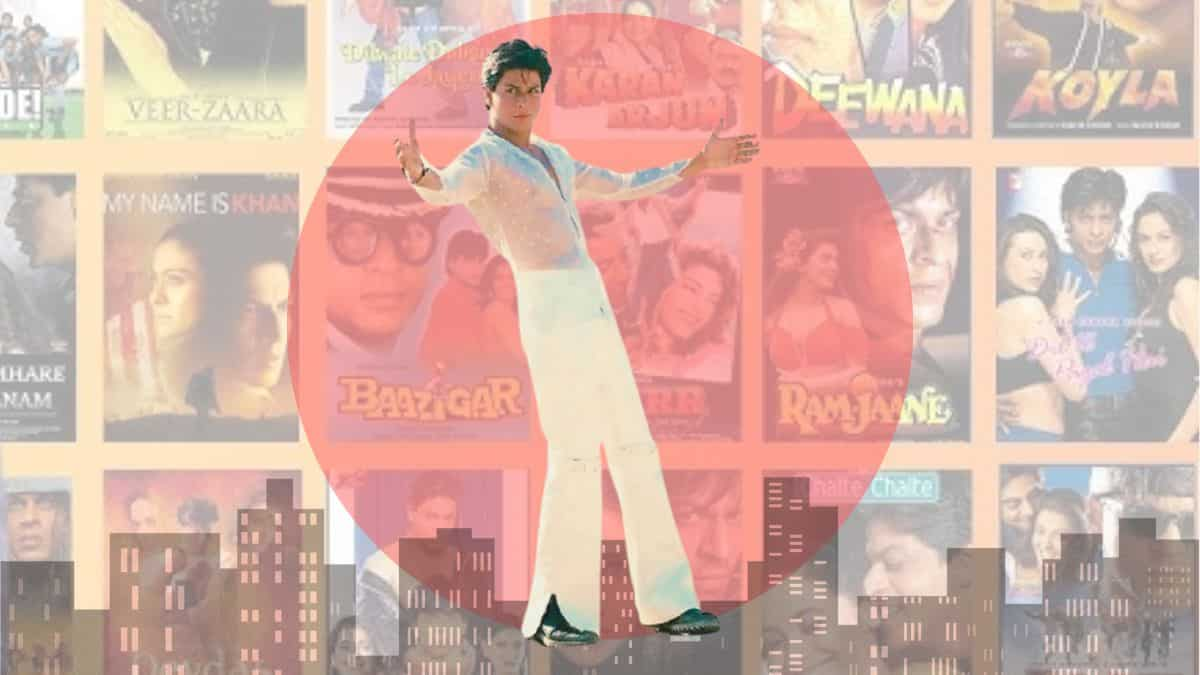Home»Features»Shah Rukh Khan At 60: The Last Of The Stars»
MOST ACTORS aspire for stardom; Shah Rukh Khan inhabits it. Such a metaphor is apt because, through his life and living, he has revamped the idea of being a star. If traditionally, fame was perceived as a transit where only a chosen few could pass through, then Khan lent it the fixity of a destination. His irrepressible popularity has congealed stardust into something concrete and expanded the illusory passage into a more tactile space — like a house.
Literal evidence of this is Mannat, located in the upscale neighbourhood of Mumbai, but lodged in the hearts of people. The white mansion, his residence in the country, is an address of the world. For years, hundreds of people have kept assembling outside, their eyes laced with a dream that Khan has been living. Doors remain closed, but the persistent crowding seems to suggest that, despite congestion, each has found space. That, if ‘mannat’ translates to a pledge made to God, then this is the temple.
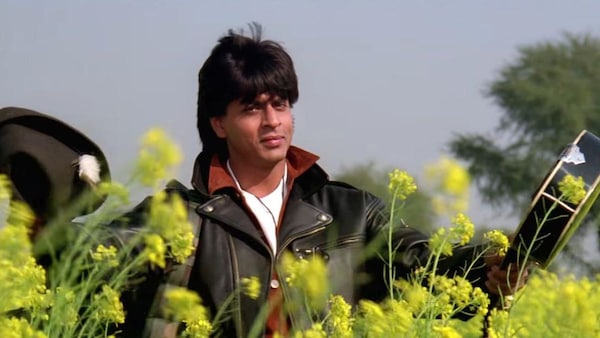
Shah Rukh Khan in DDLJ (1995)
There have been stars before, but none like Khan. This, of course, is an overreach and dipped in recency bias. But the statement also speaks to something critical: the inadequacy of words to approximate Khan’s legacy. For, how do you distil a four-decade career where there have been bad films but hardly a bad release? How do you cohere the relevance of an outsider who gained a foothold in the Hindi film industry and became synonymous with it? How do you make sense of a persona whose bad days also carry the weight of aspiration? How do you negotiate with a man’s enigma whose name is a language and its abbreviation, a title? How do you streamline a triumph that tapers only to rise again, and its tendency to dwarf what existed before, makes success more successful?
For years, Khan has been a touchstone of popularity. Not just in the premise of rivalry among his peers, like Aamir and Salman, but also as a point of comparison for newcomers. At the turn of the century, when Hrithik Roshan erupted with Kaho Naa… Pyaar Hai (2000), his nouveau heroism was weighed against Khan’s accomplishment; when Vivek Oberoi wooed Rani Mukerji in Saathiya (2002), the image harked back to Khan’s familiar charm; when Ranveer Singh played a Delhi brat in Band Baaja Baaraat (2010), his ticks were evaluated with Khan’s known arc; when Ranbir Kapoor made off-skilter career choices, Khan’s early filmography of playing anti-heroes was rehashed. He is the North Star; he is also the sky.
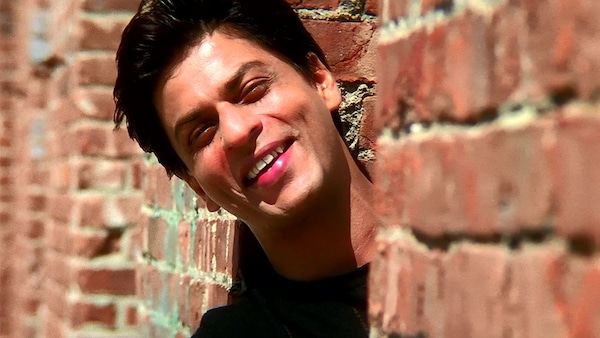
Shah Rukh Khan in Kal Ho Naa Ho (2003)
Maybe everyone is contrasted with Khan because everybody wants to be him. Across the 2000s, when the imprint of his romantic portrayals was still fresh (Kuch Kuch Hota Hai, Kabhi Khushi Kabhie Gham and Kal Ho Naa Ho – architects of this image post Dilwale Dulhania Le Jayenge in 1995 – released within years of each other), actors like R Madhavan, Shahid Kapoor and Vivek Oberoi freely borrowed his gestures. Faces broke out in a standard lopsided grin, and love was confessed through recognisable stammering.
In the next decade, as Khan pivoted to slightly diverse roles with My Name Is Khan (2010), Don 2 (2011), Fan (2016) and Dear Zindagi (2016), his persona fronted as the lead — something that continues — and the influence filtered in discreet ways. For instance, when Ranbir Kapoor said, “I’m arrogant enough to say that I’ll be a superstar soon”, when Ranveer Singh stated, “I want to be remembered as a complete entertainer,”, when Vicky Kaushal noted, “I’m not here for small wins, but to create a legacy” and when Vikrant Massey quipped, “I love money”, they were borrowing from, “I don’t wear my stardom like a tuxedo. I wear it like a T-shirt, “I have not come here to compete, I have come here to rule”, and “Don’t become a philosopher before you become rich”— all quotes by Khan.
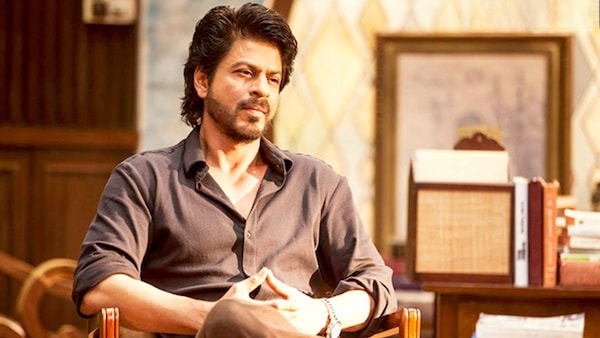
Shah Rukh Khan in Dear Zindagi (2016)
The connection is more subliminal than derivative. As someone who started working in the late 80s and whose meteoric rise through the 90s intersected with the liberalisation in India, the actor taught an entire generation to conflate success with materialism. His journey outlined the possibilities of cultural capital of the middle class — reading books, attending convent schools — and destigmatised the desire to want more. As an upshot, in the arena of Hindi films, an insider’s smugness and an outsider’s hunger sound like him. Conversely, their goal for stratospheric stardom is informed by his stature.
On paper it is a fair deal except in the India of today, this impulse is a bane.
Through the last decade, the country which witnessed Khan’s relentless march towards domination has significantly altered. Stories now are agenda-driven narratives, and the nation, once willing students of love, is an unfeeling mass of aggrieved people — disconnected, divided and disillusioned. In such a post-truth world, chasing stardom mandates moral compromise and, standing at the precipice, the current crop of male actors has nodded in agreement. With sights on colossal fame, they are seeking projects that fan mass mania and, in the trade-off, overlooking the rest: dehumanised depiction of minorities, distortion of history, and propaganda. Everything works till the film does. Responsibility can take a hike.
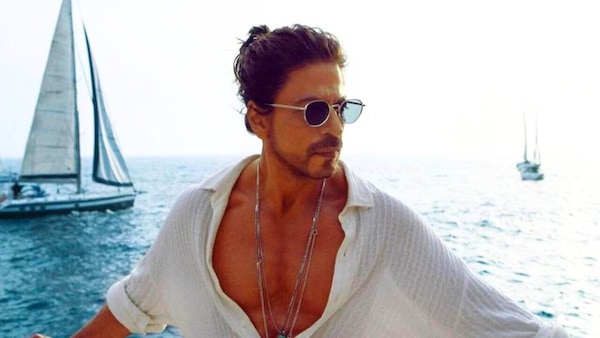
Shah Rukh Khan in Pathaan (2023)
As a result, Kaushal does Uri: The Surgical Strike (2019), Sardar Udham (2021) and Chhaava (2025). Two among them are misleading revisions of history and fuel the bigotry rising in the country; they are also huge hits. Massey, on the other hand, followed up his career breakout 12th Fail (2023) with The Sabarmati Report (2024), which centred on the 2002 Godhra train burning incident, where 59 Hindu devotees were set ablaze, and upheld the communal conspiracy that Muslims were responsible for it. Others are doing it too.
In 2023, Ranbir Kapoor fronted the hugely successful Animal, a provocative hypermasculine film made by a provocative male filmmaker. Later, the actor reasoned, “I was called the ‘next superstar’ for a very long time — and I am not saying I am that today, because unless you have those continuous blockbuster films, you can’t be called a superstar — but Animal was the correct film at the right time, to take another step up.” His next move is acting in Nitesh Tiwari’s Ramayana, whose trailer terms the Hindu epic as “our truth, our history”, undercutting, even before the start, the multi-religious ethos of India. Ranveer Singh is waiting in the wings with Dhurandhar, a spy thriller by Aditya Dhar — the dangerously efficient filmmaker who seduced the box office with Uri before the word ‘propaganda’ had entered critical lexicon. Such desperation could also be triggered by the fact that social media has decentralised fame, and the culture of stardom is fading.
Whatever the cause, the unspoken intent is the same: to be like Shah Rukh Khan. But they haven’t come close. Khan, 60, is 18 years younger than the independent India and yet has been the adult showing the way. Across his hundred films, close to three dozen cameos, and unending brand endorsements, the actor has been the untainted symbol of secularism. His work upholds the complexity of the country with all its innocence (Kabhi Haan Kabhi Naa), ambition (Yes Boss), religious dogmatism (Chak De! India), moral ambiguity (Phir Bhi Dil Hai Hindustani) and rage (Jawan). And by spending decades falling in love on screen — hopelessly, foolishly and defiantly — he taught a conservative nation to navigate the pitfalls with a beating heart. Through it all, his persona outsized work and the wide arms held screens together. If the current crop of actors is profiting off the Indians we are becoming — still viewing stardom as a passage — then he is earning dividends from the India that has remained. They are mistaking a passage for the dom(e) of a star— wanting to be Shah Rukh Khan without being him.
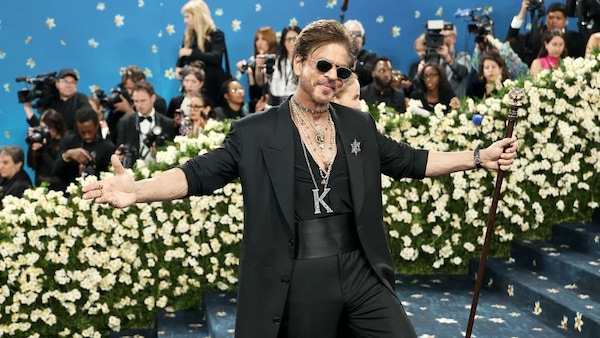
Shah Rukh Khan at his Met Gala debut in 2025.
One could argue that when he was scaling newer heights of stardom, communal hatred was not this commonplace and actors were not cornered to submission. But as a Muslim superstar, elevated to prominence and thereby suspicion, he was always living in the India we are occupying today. Most of his past interviews involve questions about religious intolerance, extremism and identity: “Are all Muslims terrorists?” “Is he a patriot?” “What is his definition of nationalism?” Political parties protested against the release of his films, as is the trend now, and yet he kept perpetuating pluralism.
The attacks have only become sharper. His son was arrested in 2023, a move widely regarded as premeditated, and Khan has moved away from the media. If silence is complicity, then he is compliant. He is also a senior now, a little beaten. Had he started out today, would he still be making the same choices — publicly stating, “religious intolerance will take us to the dark ages”? — It is difficult to answer. But one thing is for certain: he is the last of the stars. No one can be Shah Rukh Khan — not even Shah Rukh Khan.

